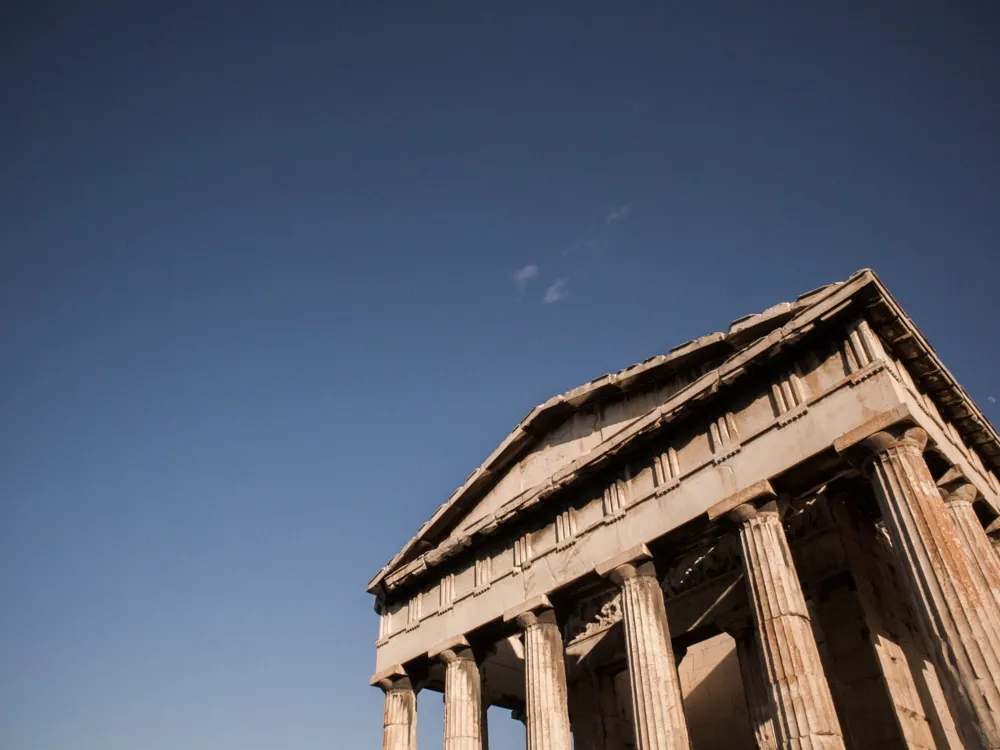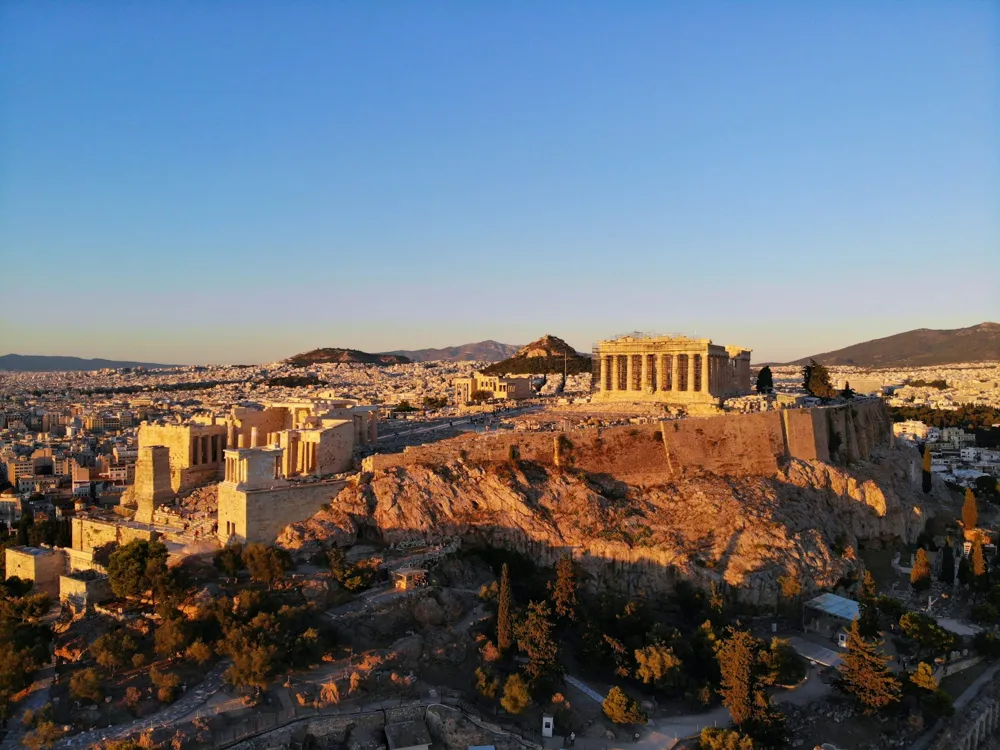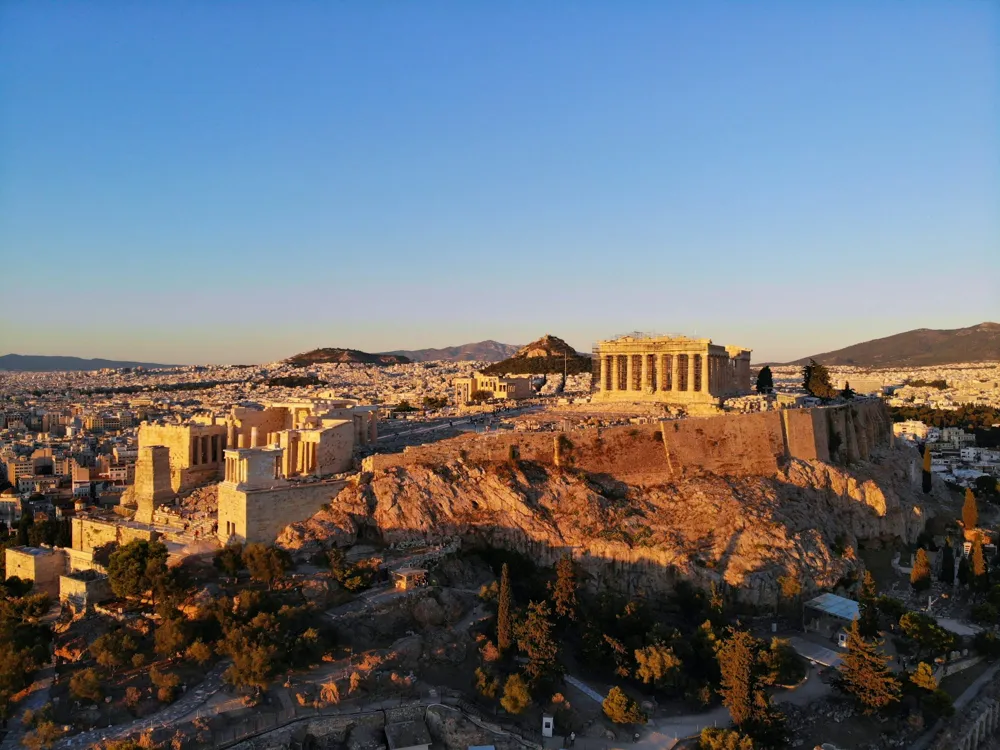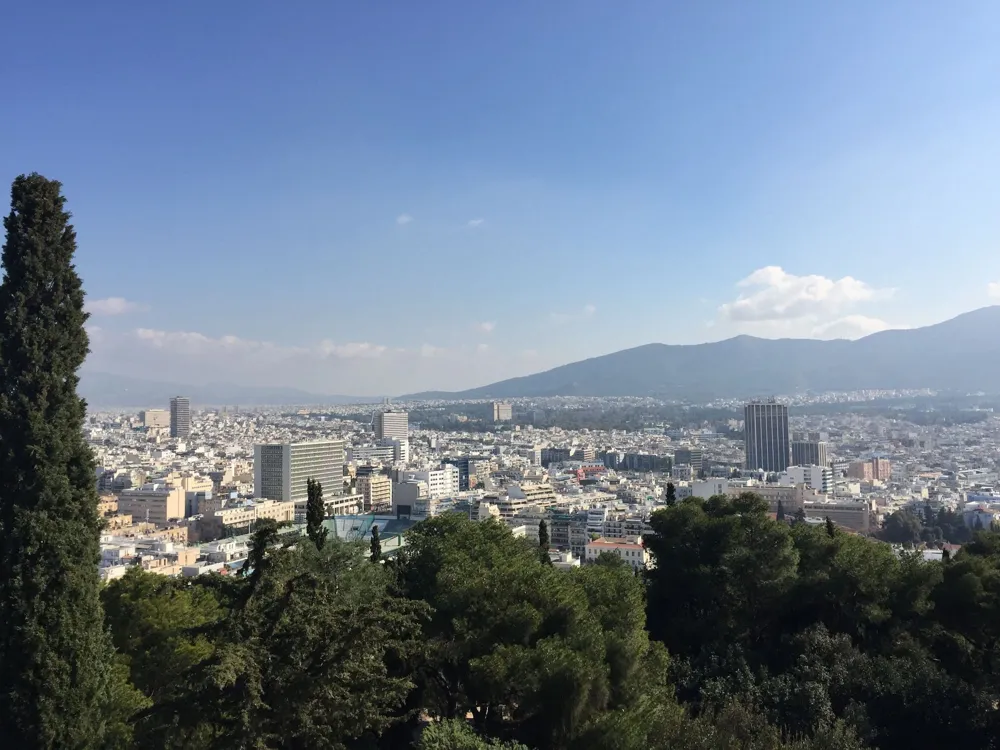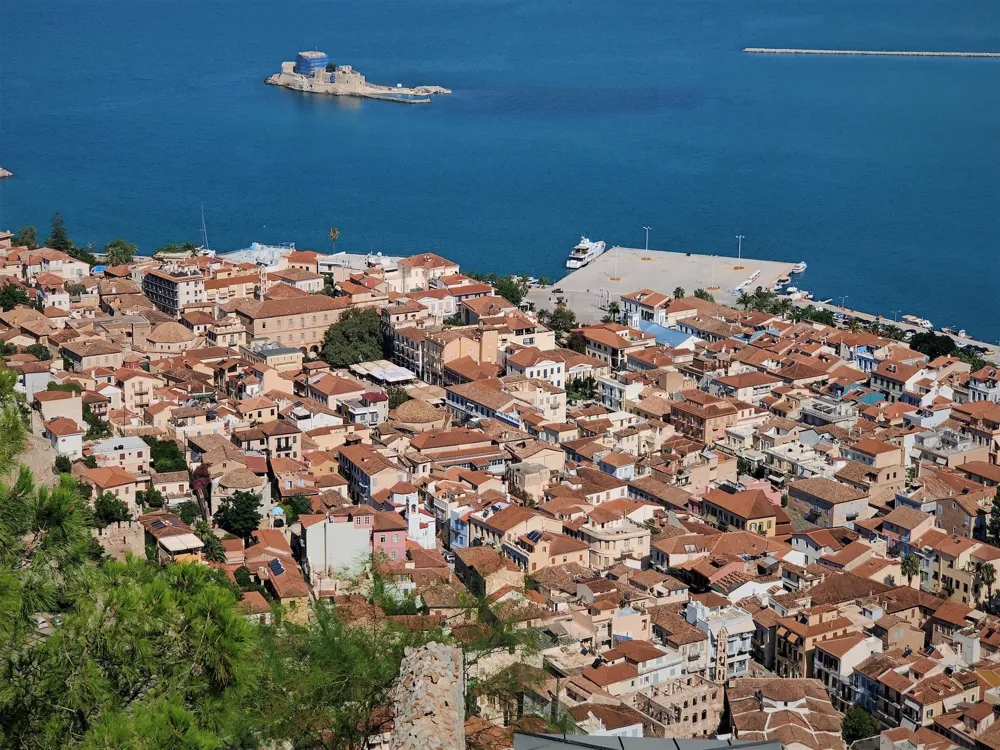The Odeon of Herodes Atticus, nestled at the base of the Acropolis in Athens, Greece, is a striking literal monument that continues to allure callers with its rich history and architectural splendour. Constructed in 161 by Herodes Atticus, a fat Greek gentleman and champion, this theatre was erected in memory of his wife, Aspasia Annia Regilla. The Odeon, famed for its semi-circular structure, was first covered with a rustic roof, a rare feature for structures of its kind, making it one of the most significant architectural feats of ancient Greece. This magnific structure could accommodate up to 5,000 observers and was generally used for musicals, which was a departure from the Greek tradition of open-air theatres. The Odeon of Herodes Atticus is an architectural phenomenon that brilliantly showcases the emulsion of Greek and Roman architectural styles. The structure's facade, facing the Acropolis, is particularly noteworthy. Made of marble, it stands three stories tall, an emotional sight reflecting the affectation of Roman architecture. Thesemi-circular theatre, a hallmark of Greek theatres, is strictly tiered and was firstly lined with rows of marble seats. The symphony, the central performance area, was paved with crossbeams of marble, adding to the theater's fineness. The ideal time to visit the Odeon of Herodes Atticus is during the spring and fall months, when the rainfall in Athens is affable and the crowd sizes are manageable. Summer visits can also be satisfying, especially during the Athens Festival, when the theatre hosts a variety of performances. While the ancient theatre has some limitations in terms of availability, sweats have been made to accommodate callers with mobility challenges. It's judicious to check in advance for any specific arrangements demanded. introductory installations like restrooms are available onsite. Opting for a guided tour can greatly enhance your experience. Knowledgeable attendants give perceptivity to the theater's history, armature, and artistic significance, offering a deeper understanding of this ancient phenomenon. The Odeon of Herodes Atticus is conveniently located in the heart of Athens and is easily accessible by colourful modes of transportation. The nearest metro station is Acropolis, on Line 2 of the Athens Metro, which is just a short walk down from the theatre. Motorcars and hacks are also readily available for those preferring road transportation. For callers staying in central Athens, the Odeon is within walking distance of the utmost corridor of the megacity centre, making it an accessible addition to any trip diary. Read More:Overview of Odeon of Herodes Atticus
The theater's design is a testament to the architectural prowess of the ancient Greeks. The theatre, known as the' cavea', was strictly drafted with rows of seating, providing clear visibility and acoustics from every angle. The stage structure, adorned with elaborate puppets and decorations, reflects the majesty of the Roman architectural influence on Greek theatre design. The integration of Greek and Roman architectural rudiments in its construction makes the Odeon a unique symbol of the artistic and literal convergence of these two great societies.Architecture of Odeon of Herodes Atticus
The stage structure, or' skene', was adorned with a two-story façade and featured multitudinous ornate columns and niches that likely housed statues. This blend of substance and functionality is a result of the Roman influence on Greek aesthetics. The advanced engineering involved in the theater's aural design is particularly noteworthy. The structure was designed to amplify sound naturally, ensuring that even the faintest tale could be heard easily by all observers, a feat that continues to dumbfound ultramodern engineers and masterminds.Tips When Visiting Odeon of Herodes Atticus
Best Time to Visit
Accessibility and Facilities
Guided Tours
How To Reach Odeon of Herodes Atticus
Odeon of Herodes Atticus
Athens
₹ 25,800 onwards
View athens Packages
Weather :
Tags : Culture
Timings : 8:00 AM - 8:00 PM
Entry Fee : Multi-site Ticket: EUR 30 (Includes Acropolis, the Ancient Agora, Hadrian’s Library, the Roman Agora)
Planning a Trip? Ask Your Question
Athens Travel Packages
View All Packages For Athens
Top Hotel Collections for Athens

Private Pool

Luxury Hotels

5-Star Hotels

Pet Friendly
Top Hotels Near Athens
Other Top Ranking Places In Athens
View All Places To Visit In athens
Faq on Athens
What is the Odeon of Herodes Atticus?
The Odeon of Herodes Atticus is an ancient amphitheater located on the southwest slope of the Acropolis of Athens, Greece.
When was the Odeon of Herodes Atticus built?
It was built in 161 AD by the Athenian magnate Herodes Atticus in memory of his wife, Aspasia Annia Regilla.
What is the purpose of the Odeon of Herodes Atticus?
Initially, it served as a venue for music concerts and was used for various performances, including musical festivals, poetry readings, and theatrical productions.
Is the Odeon of Herodes Atticus still in use today?
Yes, it is still in use for various performances, particularly during the Athens Festival, which takes place in the summer months.
How can one get tickets for events at the Odeon of Herodes Atticus?
Tickets for events at the Odeon can usually be purchased online through official ticket vendors or at designated ticket offices in Athens.
View athens Packages
Weather :
Tags : Culture
Timings : 8:00 AM - 8:00 PM
Entry Fee : Multi-site Ticket: EUR 30 (Includes Acropolis, the Ancient Agora, Hadrian’s Library, the Roman Agora)
Planning a Trip? Ask Your Question
Athens Travel Packages
View All Packages For Athens
Top Hotel Collections for Athens

Private Pool

Luxury Hotels

5-Star Hotels

Pet Friendly
Top Hotels Near Athens
Other Top Ranking Places In Athens
View All Places To Visit In athensFaq on Athens
What is the Odeon of Herodes Atticus?
The Odeon of Herodes Atticus is an ancient amphitheater located on the southwest slope of the Acropolis of Athens, Greece.
When was the Odeon of Herodes Atticus built?
It was built in 161 AD by the Athenian magnate Herodes Atticus in memory of his wife, Aspasia Annia Regilla.
What is the purpose of the Odeon of Herodes Atticus?
Initially, it served as a venue for music concerts and was used for various performances, including musical festivals, poetry readings, and theatrical productions.
Is the Odeon of Herodes Atticus still in use today?
Yes, it is still in use for various performances, particularly during the Athens Festival, which takes place in the summer months.
How can one get tickets for events at the Odeon of Herodes Atticus?
Tickets for events at the Odeon can usually be purchased online through official ticket vendors or at designated ticket offices in Athens.








